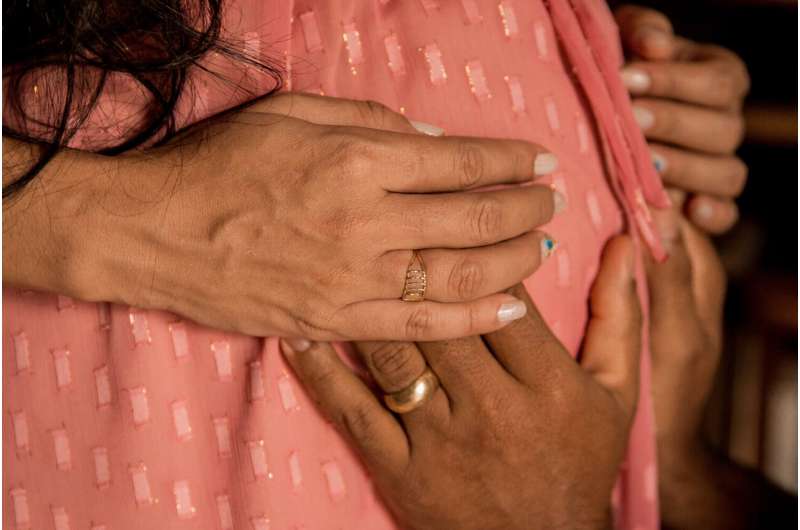
Even in ordinary times, depression is a common problem for pregnant women and new mothers. Now, a new Stanford University-led study examining the extraordinary times of the COVID-19 era has found that pregnant women’s risk of depression nearly doubled after the pandemic struck.
The study sheds light on the impact of the pandemic on this vulnerable population and highlights the need for policymakers and clinicians to provide extra support for women who were pregnant during the COVID-19 pandemic. The findings, which were published online and will appear in a future issue of Psychological Medicine, have additional importance because of the increasing evidence that depressive symptoms during pregnancy adversely affect not only the health of the mother but also that of their developing fetus and future infant.
For the study, Stanford researchers assessed pregnant women in the Bay Area both before and after coronavirus-triggered lockdowns took effect in March 2020. In the pre-pandemic group, one in four women showed signs of possible depression. In the post-pandemic group, that figure jumped to more than half of the women surveyed.
“Going into this study, we naturally expected that pregnant women would have more difficulty after the pandemic started,” said lead author Lucy King, a graduate student in the Stanford Neurodevelopment, Affect and Psychopathology Laboratory (SNAP Lab). “Nevertheless, we were quite surprised at how much higher the rates of potential depression turned out to be in the pandemic-affected group.”
Senior author and SNAP Lab Director Ian Gotlib, the David Starr Jordan Professor at Stanford’s School of Humanities and Sciences, emphasized that the adverse effects of maternal stress on infants are a form of collateral damage caused by COVID-19, impacting those whom the virus never actually infected.
“Because depression in pregnancy may affect the developing fetus as well as the relationship between the mother and the infant after birth, these effects are unlikely to cease when the pandemic ends,” said King.
A tale of two cohorts
The study compared survey responses provided by pregnant women who participated in two projects led by King and others in Gotlib’s lab. The first, called the Brain and Behavior Infants Experiences (BABIES) project, assessed around 90 pregnant women living in California’s Bay Area prior to the COVID-19 pandemic.
The second project, named COVID-19 Perinatal Experiences (COPE), was conducted remotely between March and May 2020, and once again recruited pregnant women living in California’s Bay Area via online advertisements. More than 700 pregnant women completed the COPE survey, answering questions about 16 indicators of stress and adversity they experienced due to the pandemic during April 2020. Survey questions covered the objective effects of the pandemic on women’s lives, like whether they had lost their job or had experienced changes in prenatal care, such as having to switch providers or switch a planned vaginal birth to induction or Caesarian section. The questions also asked participants about their subjective stress responses to the pandemic, such as how concerned they were about catching the virus, disruptions in social support, possible changes in the quality of the medical care to be received during labor and delivery, and their ability to care for their baby after birth in light of the pandemic.
With survey data in hand, the researchers sought to make as direct as possible comparisons of the women’s self-reported depressive symptoms across the two groups. King and colleagues did this by matching a subset of 164 women across the cohorts. The women were of similar age, marital status and race/ethnicity, and had similar incomes, education attainment levels and histories of treatment for mental health difficulties or substance abuse.
Overall, some 40 percent of the 700-plus women in the post-pandemic group scored high in depressive symptoms on the survey, showing many of the hallmarks of depression. Across the matched groups, 25 percent of pre-pandemic women and 51 percent of post-pandemic women reported symptoms indicating potential depression.
Getting help where it’s needed
From the perspective of public policy, the findings support broad-based screenings to identify pregnant women at risk of depression, King says. These women and their infants could then benefit from counseling, improved access to available resources and other interventions. These forms of assistance could help women partially recover from the current pandemic, and—looking ahead—better cope in a similar kind of stressful environment imposed by possible disease outbreaks.
Because the study assessed women only through April 2020, it’s unknown if rates of stress and depression stayed the same or changed as the pandemic has worn on. Stress and depression may have ebbed as pregnant women adapted to the “new normal,” or worsened if, for example, the women learned of loved ones suffering or dying because of the virus, King and Gotlib explained.
Of special note, the study found that the women most vulnerable to depressive symptoms during the pandemic were those who were already experiencing challenges due to socioeconomic inequality, such as persons of color and immigrants, as well as women with pre-existing poor physical health and histories of mental disorders.
“Those findings indicate there may be specific groups of women who should be targeted to receive special attention in terms of support,” says King.
As more studies continue to document the adverse impacts of maternal depression and stress on infant development, it highlights the need to get a handle on the prevalence of depression in different populations of pregnant women.
Source: Read Full Article